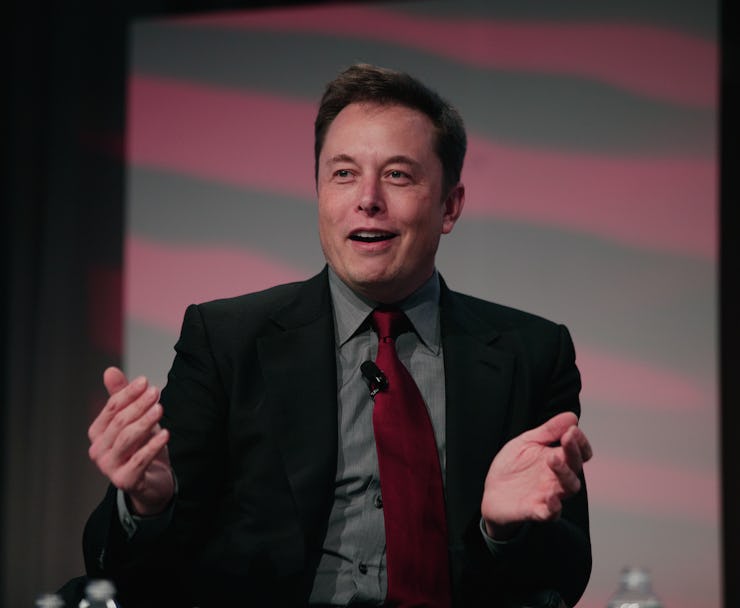Elon Musk Is "Making Progress" on a Neural Lace Brain Hack

On Saturday, Elon Musk announced on Twitter that he is “making progress” on his neural lace design, which is designed to augment human intelligence and thereby avoid the inevitable takeover when A.I.s become smarter than us.
He may have “something to announce in a few months,” he wrote. Given that this is Musk we’re talking about — the person who pioneered the world’s first autonomous, electric vehicles, dreamed up the Hyperloop, and is doing what he can to take our species to Mars (and beyond) — it’s advisable to hear him out.
It doesn’t take a whole lot for most mortals to feel accomplished. Let’s say an average person does laundry and gets groceries each Sunday — if they manage to clean their apartment as well, they’ll feel like a god. Musk’s ambition, on the other hand, is insatiable. He wakes up on Sundays (perhaps after spending the night in a sleeping bag at the Tesla factory) and bakes his kids cookies, then gets to work illuminating humanity’s path forward. If he’s not toiling away on pressing SpaceX or Tesla projects, he’s evidently working on other moonshots. Of late, it seems, he’s been occupying his limited free time with neural lace.
Elon Musk.
Neural lace is, in effect, a computer interface woven into the brain. The idea dates back to science fiction author Iain M. Banks’s Culture series: In these, neural lace basically enabled its bearers to access Google in thought. As the neural lace grew with the brain and understood each recipient’s brain’s makeup, it could also restore consciousness after bodily death. The lace picks up on neuronal communication but does not necessarily interfere with the signals.
Hypothetically, neural lace systems could wirelessly transmit signals to external devices; instead of typing clumsily on a smartphone’s keyboard, we could think our messages into existence. Another, seemingly more ambitious use would flip the switch, and allow the lace to communicate with neurons via electrochemical stimulation. Traditional learning would become a thing of the past — think Neo learning Kung Fu in the Matrix.
Musk says that, since neurons depend on constant blood flow to function well, a neural lace could be injected into the jugular and then carried, via blood, to the cortical neurons. Such a procedure, though frightening in theory, would be far less invasive than brain surgery. Scientists already figured out how to do so in mice, and hope to do so for humans, too.
But Musk is certain that A.I. will outpace human intelligence in the near future, and he’s not getting any younger personally. Instead of waiting for the robot takeover, he’s taking matters into his own hands. A.I.’s inevitable ascension will at best relegate humans to the role of a house cat and at worst, well — think Skynet. He said at this year’s Code Conference that if no one pursued neural lace, he’d get after it himself. Now, he’s “making progress,” and if we can hold our collective breath for a “few months,” we may just learn how humans will remain supreme.